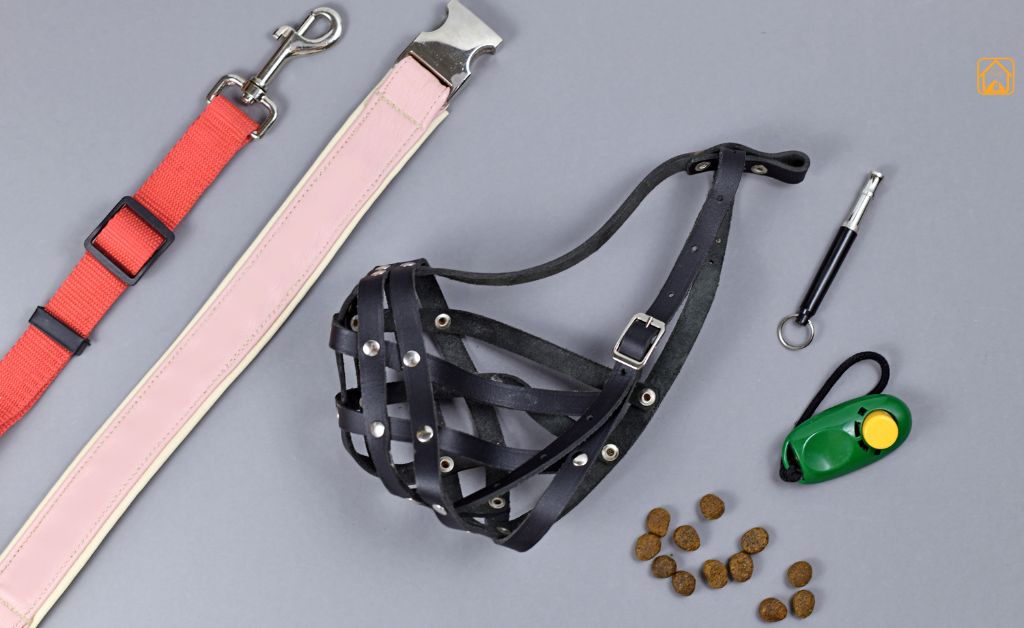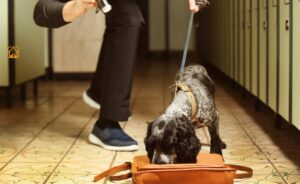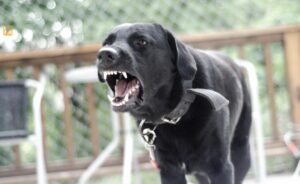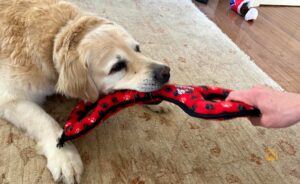Importance of Dog Training Tools
Dog training tools aren’t just gadgets, they’re keys to better communication and a happier life with your pup. Whether you’re dealing with puppy potty accidents or a grown dog that pulls like a freight train, the right tool can help you guide your dog’s behavior gently and clearly.
Using professional dog training tools builds a bridge between what you want and what your dog understands. High-quality treats, clickers, leashes, and harnesses are tried-and-true ways to reward good behavior and keep your dog safe during training.
The best dog training tools don’t just solve problems. They boost confidence for both you and your dog, making learning fun instead of stressful. And when training feels like playtime, dogs stay motivated.
Dog Training Tools for Common Behaviour Issues
Dog Training Tools for Barking
- Clickers: Mark the moment your dog is quiet. Reward that pause with a treat. Over time, they learn that being calm gets them what they want.
- Calming aids: Sometimes, background noise like white noise machines or calming music can reduce triggers that set your dog off. Not a tool you hold in your hand, but it can make a world of difference.
- Visual barriers: For window barkers, try frosted window film or baby gates to limit views of squirrels and strangers.
- Interactive toys: Puzzle toys and slow-feeders keep their brain busy and mouth occupied, so they bark less out of boredom.
To get a better understanding, read our guide on how to stop your dog from barking effectively and calmly in different situations.
Dog Training Tools for Biting
- Tug toys and chews: Redirect your dog’s urge to bite onto something safe. Keep tug sessions short and always let your dog “win” sometimes, it builds confidence.
- Clickers: Mark gentle play or appropriate chewing. Reward calm mouths.
- Bite deterrent sprays: For furniture or hands, bitter apple sprays can deter unwanted chewing. But honestly, supervision and redirection work better in the long run.
- Muzzles: For safety during training with a dog who has a bite history, a well-fitted basket muzzle (introduced with treats and patience) can be a lifesaver. It’s not a punishment, it’s a tool for practicing good habits safely.
Dog Training Tools for Jumping
- Leash and harness: Keep your dog leashed for greetings. Step on the leash to limit upward movement until they offer a sit.
- Clicker and treats: Mark and reward any “four paws on the floor” moments. The more you pay attention to calm greetings, the faster your dog learns.
- “Place” training mats: Teach your dog to settle on a mat when guests arrive. It gives them a job and helps them succeed.
Dog Training Tools for Pulling
- No-pull Harnesses: Prevent choking and give better control.
- Front-clip Leashes: Help redirect energy forward.
Dog Training Tools for Reactive Dogs (Pulling or spinning)
- Front-clip harness or head halter: These give you more control with less pulling, making walks and training safer for everyone.
- Long lines: For gradual distance work in safe spaces, long lines let you practice “look at that” or recall exercises while keeping your dog safe.
- High-value treats and clickers: Mark and reward calm behavior when they see a trigger. Over time, they start to look to you instead of reacting.
- Visual barriers: Like barking, sometimes a simple barrier (car window shades, privacy screens) can reduce visual triggers during walks or at home.
Sometimes, a single tool can tackle several challenges. When my dog went through a jumping phase, a treat pouch and a mat worked wonders, she learned that ‘four paws on the floor’ meant treats. For barking, I relied on my trusty clicker and lots of patience.
Tools for Specialized Training
Agility Training (Herding Dog)
- Herding sticks: Used to guide movement and communicate direction at a distance, never to punish!
- Whistles and flags: Signal commands to dogs working with livestock over long distances.
- Lightweight long lines: For early training, these help handlers redirect or stop a dog safely before true off-leash work.
Scent Work
- Scent kits: These include essential oils, cotton swabs, and containers, perfect for nosework or search-and-rescue games.
- Targets and odor vessels: Used to hide scents and teach your dog to “alert” when they find the right one.
- Reward toys: Often paired with scent detection as a jackpot prize.
Want your dog to sense you before you even arrive? Check out our scent detection guide to learn how to train their powerful nose.
Service & Assistance Dogs
- Service vests and harnesses: These signal the dog’s role and provide attachment points for leashes, ID, or even medical alert patches. Comfort and fit are crucial, never sacrifice your dog’s wellbeing for a fancy look.
- Target sticks and clickers: Used to teach precise tasks like pressing buttons, opening doors, or retrieving items. Clickers are especially powerful for shaping complex behaviors.
- Specialized leashes: Hands-free or wheelchair-compatible leashes give independence and safety for handlers.
Gun Dog & Bird Dog Training (Hunting)
- Whistles: Essential for gun dog training. Distinct sounds signal different commands, recall, stop, change direction. Choose a whistle that works for both you and your dog’s hearing.
- Retrieving dummies: These simulate birds or game. Durable, weighted, and sometimes scented, they help train dogs to retrieve gently and consistently.
- Long lines: For practicing distance work in fields or water, long lines offer safety and control.
- Duck dog training tools: Floating bumpers, waterproof vests, and decoys help prepare your dog for real-world hunts.
Deaf & Reactive Dogs
- Vibration collars (not shock) for attention.
- Hand signals, treat pouches, and visual cues.
Every specialty has its own set of best dog training tools. And let’s be honest, sometimes you just need to get creative. My neighbor’s deaf dog learned to come using a gentle tap and a big smile, no fancy tools required, just patience and love.
Choosing the Right Tool for Your Dog’s Needs
Understanding Your Dog
Every dog is unique. What works for a high-energy Border Collie may not suit a gentle senior Pug. Start by thinking about your dog’s age, size, breed, and temperament. Is your dog food-motivated? Sensitive to sounds? Prone to pulling or barking?
Match Tools to Training Goals
- Puppies: Soft collars, lightweight leashes, and plenty of treats for socialization and basic obedience.
- Strong Pullers: No-pull harnesses or head collars help keep walks manageable.
- Shy or Reactive Dogs: Tools that offer distance, like long lines or training mats, give space to build confidence.
- Special Needs: Deaf dog training tools (e.g., vibration collars, hand signals), bird dog training tools, or service dog gear.
Ask yourself: What’s my biggest challenge right now? Sometimes, the simplest solution works wonders. I once swapped a basic flat collar for a front-clip harness, and suddenly, my walks were peaceful. Go figure.
How to Use Popular Dog Training Tools Effectively
Clickers
Click at the exact moment your dog does the right thing, then treat. Timing is everything. Practice with simple cues like “sit” or “touch.”
Treats
Keep them small and special. High-value treats (think real meat or cheese) grab attention fast. Use a treat pouch to always have rewards on hand.
Leashes & Harnesses
Always fit gear snug but comfy. Use short leashes for close work, long lines for recall. For pullers, front-clip harnesses change the game.
Crates
Crates should be a safe, cozy space, not a punishment. Feed meals and give treats in the crate so your dog loves going inside.
Practice makes perfect. I remember when I first used a clicker with my terrier. She stared at me like I’d grown a second head, but within a week, she knew exactly what that sound meant. Magic, honestly.
Aversive vs. Positive Reinforcement Tools: What the Experts Say
Most dog behavior experts and veterinarians agree: Positive reinforcement tools (treats, clickers, praise) are safer and more effective than aversive dog training tools (shock, choke, prong collars). Research shows that punishment-based tools can increase fear, anxiety, and aggression.
Choose tools that build trust and make training fun, not scary. If a tool doesn’t feel right, skip it. Your relationship with your dog matters most.
Dog Training at Home: Tips, Tools, and Safety Considerations
Training at home is where most progress, and most hilarious mishaps, happens. The living room or backyard is your dog’s first classroom. But to make it safe and effective, you need the right approach and a few essential dog training tools.
Set Up for Success
- Pick a quiet space: Fewer distractions mean faster learning. Shut doors, use baby gates, or train during calm parts of the day.
- Gather your tools: Have treats, clicker, leash, and a mat or crate within reach. Keep sessions short (5-10 minutes) to avoid frustration.
Safety First
- Supervise: Especially with puppies, never leave them alone with new gear, long lines, or puzzle toys.
- Check fit: Harnesses, collars, and head halters should fit snugly but comfortably. You should be able to slip two fingers under them.
- Watch for stress: Signs like yawning, lip licking, or turning away mean your dog needs a break.
I’ll admit, the first time I set up an agility tunnel in the hallway, I forgot to move the lamp. One wag of the tail and, crash! Lesson learned: clear the area first.
Must-Have Dog Training Tools for Home
- Clicker (or a consistent verbal marker like “yes!”)
- High-value treats and a treat pouch
- Leash and well-fitting harness or collar
- Training mat or place bed
- Puzzle toys or chews for downtime
- Baby gates or playpens for managing space
- Crate for safe rest and potty training
Tip: Start with easy wins. Teach your dog to touch your hand, sit, or lie down before moving on to “leave it” or recall. Celebrate every tiny victory, and don’t be afraid to laugh at the bloopers. You’re building both skills and memories.
FAQs about Dog Training Tools
What are the must-have dog training tools for beginners?
Start with a sturdy leash, comfortable collar or harness, high-value treats, clicker, and a treat pouch. These basics cover most obedience and behavior training needs.
Are aversive dog training tools ever safe or necessary?
Most experts recommend avoiding aversive tools like shock, choke, or prong collars. They can cause fear or pain, and positive reinforcement methods are proven to be more effective and humane.
How can I use dog training tools for barking or jumping?
For barking, use a clicker to mark quiet moments and reward with treats. For jumping, teach a “place” command using a mat and reward calm greetings. Consistency and patience are key.
Is clicker training better than using just treats?
Clicker training offers precise timing, helping your dog understand exactly which behavior earns a reward. While treats alone can work, adding a clicker often speeds up learning, especially for complex behaviors.
What tools help with dog training at home?
Gather treats, clicker, leash, harness, mat, and fun toys. Create a quiet space and keep sessions short and positive. Training at home builds a stronger bond and lets you work at your dog’s pace.
Are there special tools for deaf, hunting, or service dogs?
Yes! Deaf dogs benefit from vibration collars and hand signals, gun/bird dogs use whistles and retrieving dummies, and service dogs often need special harnesses with handles and ID patches. Always match tools to your dog’s unique needs.
Can I train my dog without any tools?
You can teach basics with your voice and hands, but tools like treats, clickers, and leashes make training more effective and safer. Tools help communicate clearly and keep sessions fun for both of you.
Where can I find trustworthy information on dog training tools?
Check reputable sources like the American Veterinary Society of Animal Behavior (AVSAB), the American Kennel Club (AKC Training Resources), or certified trainers. For more dog training advice, explore other guides on Petshelter.org.
Conclusion
The right dog training tools can turn frustration into fun for both you and your pup. Whether it’s a clicker, harness, or treat pouch, each tool has a purpose. Find what works best for your dog’s needs, stay patient, and enjoy the journey of building a stronger bond together.



